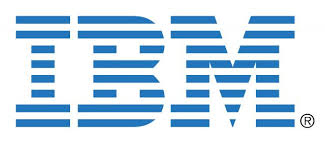IBM is Helping Close the Opportunity Gap with P-TECH
By Nahum Pacheco

Many leaders in education talk about closing the achievement gap, but during an economic crisis like we’re all experiencing today, it’s more about closing the opportunity gap–especially in communities like mine, where many Hispanics live.
Hispanics are a growing community in our country and continue to increase in population and economic impact annually. In fact, 6 in 10 Latinos in the United States are 35 years old or younger and responsible for 82% of the labor force growth.
Yet 33.7% of U.S. Hispanics among 18 and 19 years old are unemployed and less than 4% of them held science and engineering positions – despite there being over half a million technology jobs available in this country.
A new study conducted by IBM Institute for Business Value (IBV) looked into how Hispanics living in the U.S. feel about working here, and found 67% of those surveyed believed they have to work harder to succeed because of their Hispanic identity.
That’s why IBM is working with policy makers and education leaders to double the number of Pathways in Technology Early College High School (P-TECH) schools. This public education model prepares young people with the academic, technical and professional skills required for 21st Century jobs predominately in underserved communities like many Hispanics live in today. This effort will expand the program to 150 schools in the U.S., which is 50% of the company’s total commitment of 300 by 2023.
The P-TECH model, created by IBM and educators in 2011, helps students from mostly disadvantaged communities to get a high-school diploma, along with a no-cost Associates degree in fields like Computer Programming. These technical skills plus professional skills from internships and mentorships at companies like IBM, Global Foundries and more, provide a high school student with a track for their career or to college.
I know because I work with P-TECH students at Juan Navarro High School in Austin, Texas—a school that has an 87% Hispanic population—regularly and it has shown me the impact of workplace learning experiences on their growth. Whether it be crafting out resumes alongside IBM mentors and watching them realize that their everyday duties and responsibilities can translate to professional skills, or that drone competitions not only lead to improving coding abilities but also refining presentation skills, experiences like these are indispensable when you consider that these students would not have access to them in a traditional high school setting or via their existing networks.
Additionally, part of our success is having a bilingual community and parental engagement. While many P-TECH students at our school tend to be fully bilingual, school staff often conducts local community outreach in Spanish. Prior to the pandemic, we would hold events like parent information nights, district expos, and fall festivals, where the schools explain the particularities of P-TECH and the American educational system.
And during this climate in particular, the community is interested in dual degree programs. For example, Austin Community College’s office of college and high school relations said last month that they have seen a 28% increase in dual-credit enrollment this past summer and expected similar jumps this fall and spring. With the instability of the pandemic job market – June unemployment in Austin was 7.5%, nearly triple its rate last year – an associate’s degree in an area like computer science can be a lifeline, especially without an attached tuition cost.
Achievement is closely tied to opportunity. Hispanic students facing today’s job market may believe they have to work double as hard to make it, yet education and mentorship are two tools to close the opportunity gap and help this young generation create a more prosperous tomorrow.

